Not sure about the Best Grass for Dogs? Well, this guide will help you pick the right one for your pooch along with how to grow and maintain it!
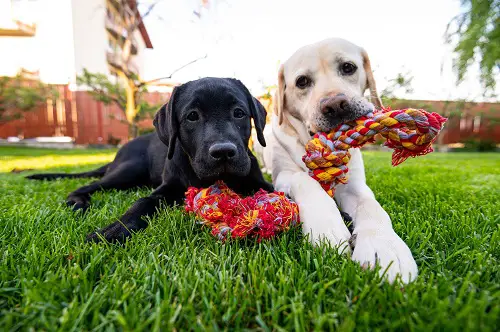
If you have a dog, you might be interested in growing a lawn that’s not only pleasing to the human eye but also to your pet. Below are some of the Best Grass for Dogs that are generally pet-friendly and tips on how to grow each one.
Do Dogs Love Grass?
Many dogs seem to like spending time on grass, whether lying down on a cool, soft lawn or even eating the grass. While the reasons behind grass-eating are not fully understood, it’s a common behavior.
When you have a dog, it’s best to choose tough, durable grass types that can handle some activities from pets. It’s also very important to avoid using harmful pest killers or fertilizers that could be poisonous to dogs.
Dog-friendly grasses and proper lawn care tips can help you create the one that both your two-legged and four-legged family members will enjoy.
Easy to Make DIY Dog Fence Ideas for the Garden
Best Grass for Dogs
1. Kentucky Bluegrass
Botanical Name: Poa pratensis
Kentucky Bluegrass flourishes in full sun but can tolerate some shade. It thrives best in well-drained, fertile soil, so give it consistent watering, especially during hot, dry spells.
Poa pratensis is known for its soft, fine texture that creates a pleasant surface for dogs to lie on and romp around.
2. Fescue
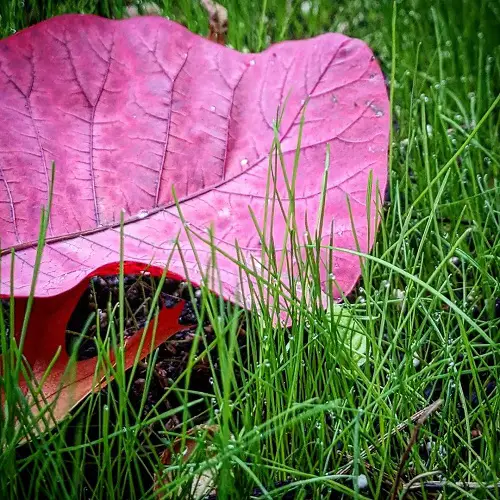
Botanical Name: Festuca
Fescue is tolerant of a range of soil types and is known for its drought resistance. It grows well in both full sun and partial shade. Regular but moderate watering is sufficient to grow it.
Festuca is a hardy grass that withstands the wear and tear from dogs quite well, making it suitable for active pets.
3. Bermuda Grass
Botanical Name: Cynodon
Bermuda Grass loves full sun and is highly tolerant of hot, dry conditions. It does not need much care and can be grown easily.
Its dense, sturdy turf can withstand a good deal of activity, so it’s quite suitable for dogs that enjoy running and playing outdoors.
4. Zoysia Grass
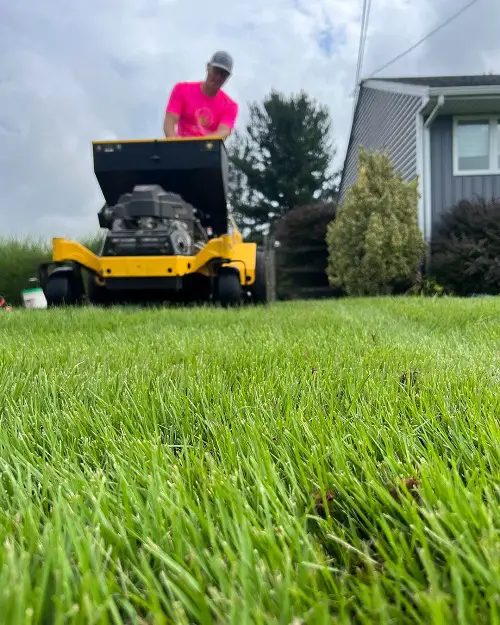
Botanical Name: Zoysia
Zoysia Grass needs well-draining soil and adapts to different kinds of soil easily. It’s also drought-tolerant once established and won’t mind both sun and light shade.
Zoysia soft texture and resilience make it comfortable for dogs to lie on while also being able to tolerate pet activity.
5. Buffalo Grass
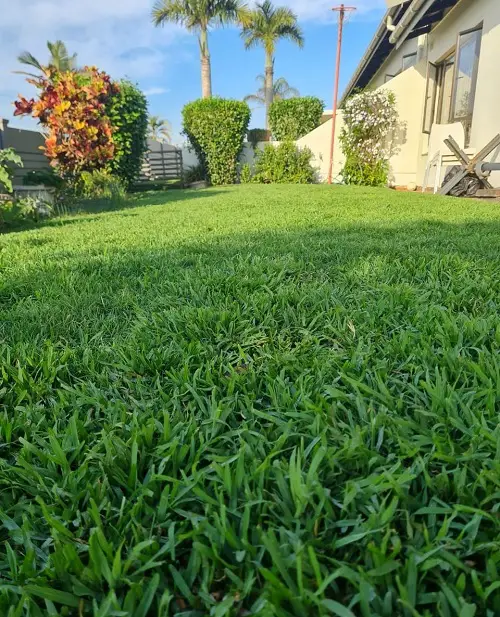
Botanical Name: Bouteloua dactyloides
Buffalo Grass thrives in low-fertility soils and is well-adapted to drought conditions. It prefers full sun and requires minimal watering as well.
This grass type has fine blades, creating a comfortable surface for dogs to lounge on.
6. Ryegrass

Botanical Name: Lolium perenne
Perennial Ryegrass is known for its rapid germination and establishment. This grass type prefers full sun but can tolerate light shade. It thrives in well-drained, fertile soil and requires regular watering to maintain its lush appearance.
Lolium perenne has a fine texture and creates a soft, cushiony surface that dogs often find comfortable for playing. Its quick establishment can be particularly useful if you’re looking to repair patches damaged by pet activity.
7. Centipede Grass
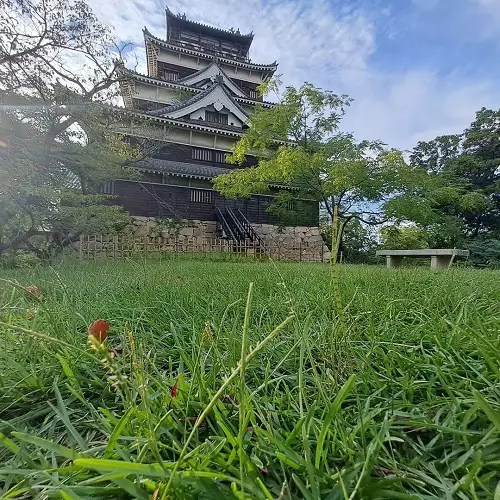
Botanical Name: Eremochloa ophiuroides
Centipede Grass is a low-maintenance option that’s well-suited for acidic soils. It’s relatively slow-growing and thrives in full sun to light shade.
Eremochloa ophiuroides has a coarse texture and creates a low, dense turf. Its hardiness might make it a good choice for yards that see a lot of canine activity.
Maintaining Grass with Dogs Around
Maintaining a lush, green lawn when you have a dog can be challenging but is entirely possible with a thoughtful approach.
- Dog urine can create yellow spots on your lawn. Water the area immediately after your dog urinates to dilute the nitrogen content, reducing the damage.
- Get rid of all fecal waste to prevent it from breaking down into the soil, which can lead to unwanted nutrient imbalances.
- Always choose pet-friendly fertilizers and pesticides. Organic options are usually safer for both dogs and humans.
- Heavy foot (and paw) traffic can lead to soil compaction. Aeration can help relieve this by improving water and nutrient absorption.
- Designate specific areas for your dog to play or do its business. This helps in limiting the damage to particular spots, making maintenance easier.
- Consider installing durable pathways of stone or wood chips where your dog usually runs. This can help prevent wear and tear on the grass.


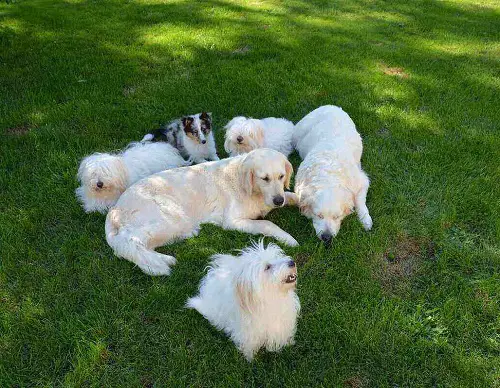
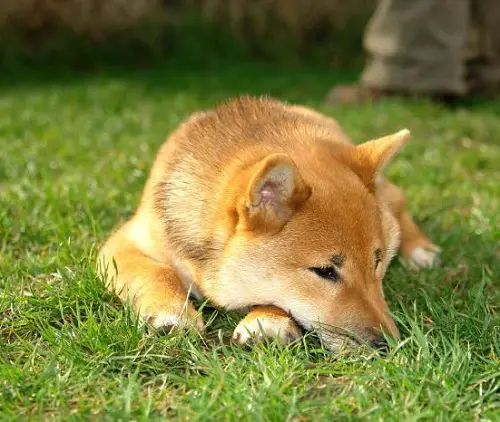
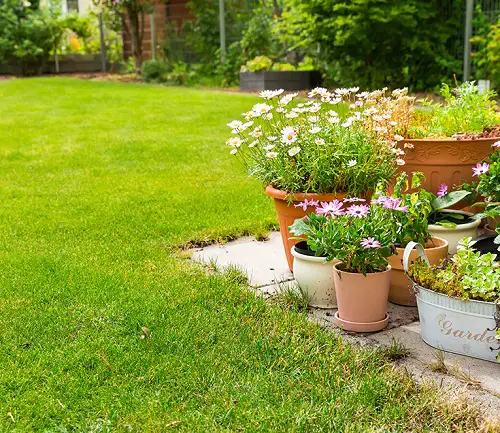

Where can I buy buffalo grass? My borderdoodle puppy likes to eat grass and old like to work it into my yard for her. We live in Florida.